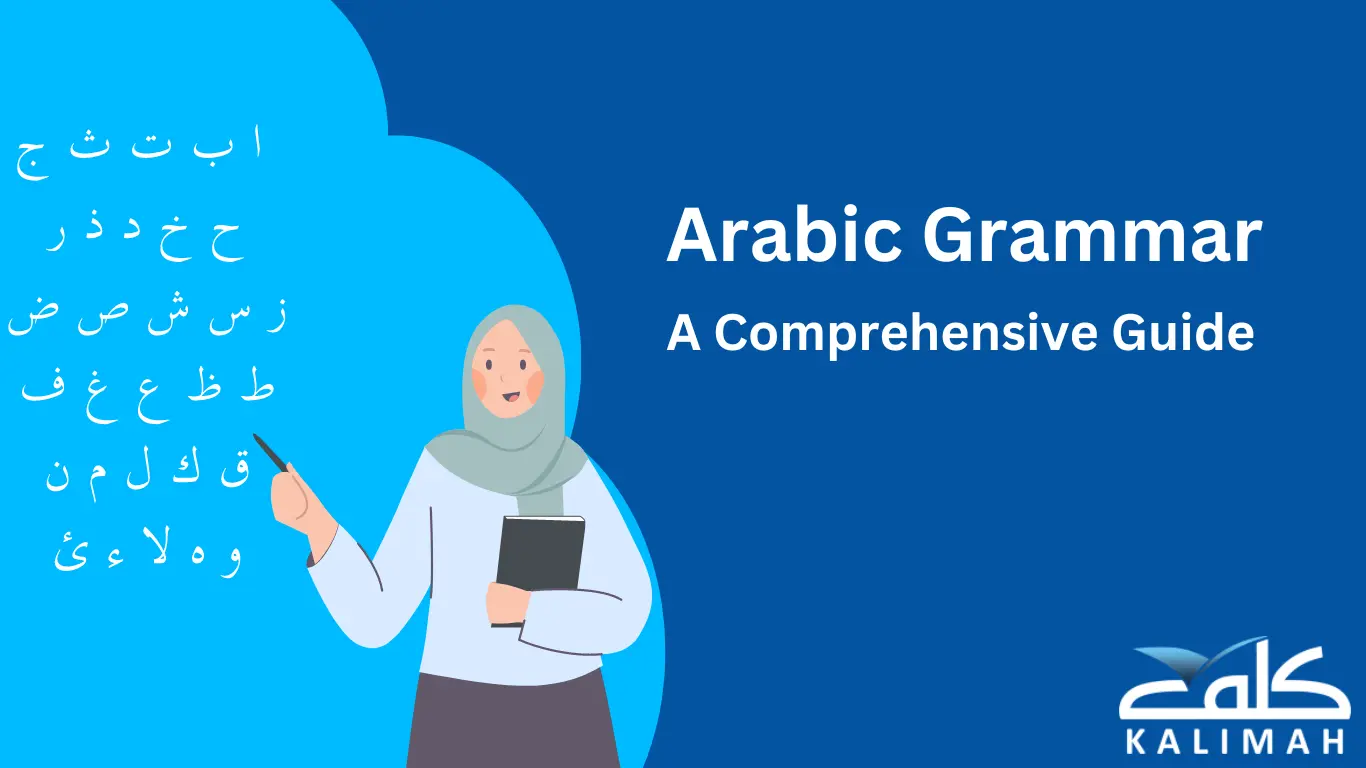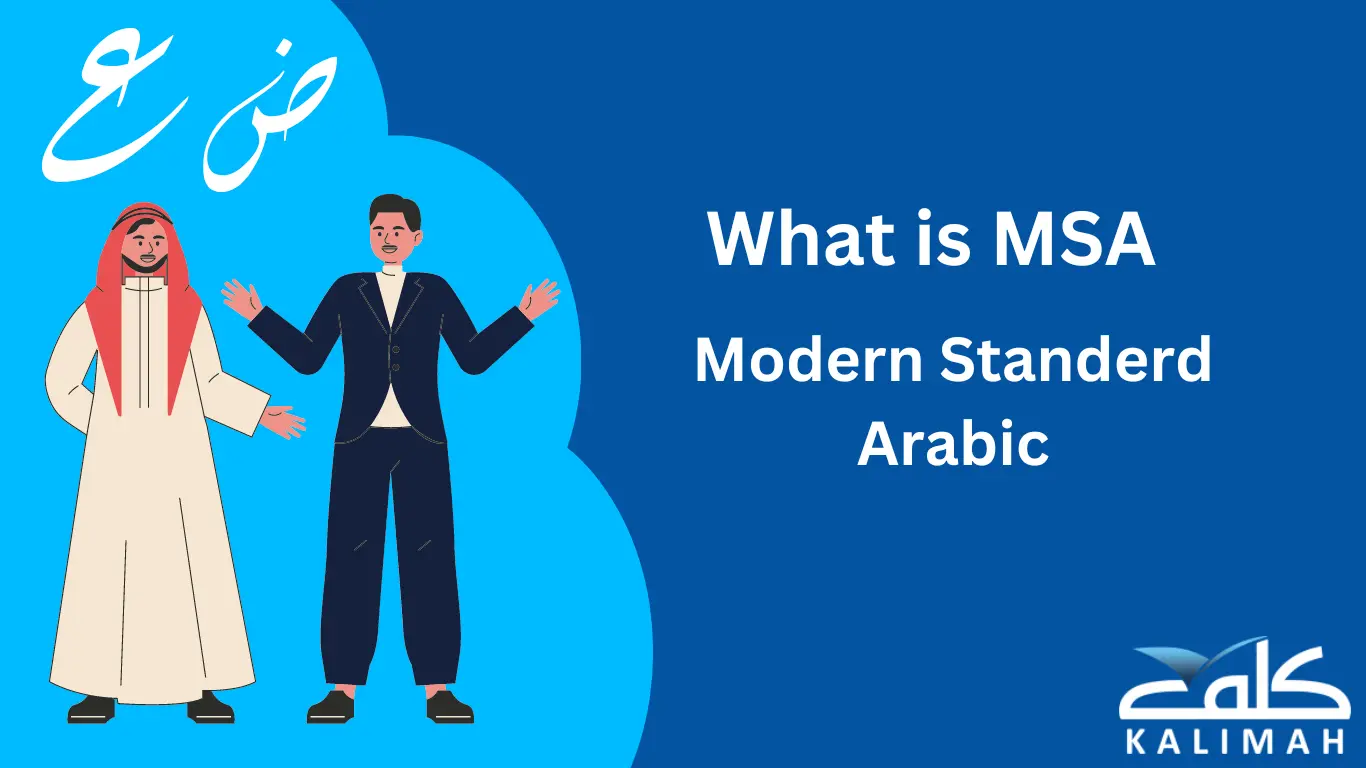Arabic is a language that uses a unique system of vowels, known as diacritical marks (also known as tashkeel or harakat). These marks are used to indicate the pronunciation of words and to distinguish between words that are spelled the same but have different meanings.
In this article, you will learn everything about vowels in Arabic including their definition, examples and the difference between short and long Arabic vowels.
What are Vowels in Arabic?
In the Arabic language vowels are known as Harakat (حَرَكَات), they are signs that determine how to pronounce the Arabic letters. In addition to that, they indicate the case of Arabic nouns and adjectives based on their position in the sentence.
The Arabic language has three main short vowels, which are called Fathah- فَتْحَة, Kasrah- كَسْرَة, and Dammah- ضَمَّة. These vowels are represented by signs placed above or below a letter.
Additionally, there are three long vowels in the Arabic language which are the Alif (ا), Waw (و) and Yaa (ي).
Which makes the overall number of Arabic vowels six vowels.
What are short vowels in Arabic?
Learning the three short Arabic vowels is crucial, especially for beginners; the reason for that is their impact on the meaning of Arabic words.
It is worth mentioning that the omission or substitution of a single harakah can change or even totally reverse the meaning.
-
Fathah
Fathah is represented by -َ and is pronounced as ‘a’ in the English word “above”.
-
Dammah
Dammah is represented by ـُ and is pronounced as ‘u’ in the English word “put”.
-
Kasrah
Kasrah is represented by ـِ and it is pronounced as ‘i’ in the word “if”.
-
Non-voweled Arabic letters (Saakin letters)
In addition to these three vowels, there is also a sign called Sukun, which is represented by ـْ and indicates that the consonant letter is vowelless. Examples of words with Sukun is the letter “Noon” in kun- كُنْ.
Examples of short Arabic vowels
The table below shows some examples of the short Arabic vowels:
| Short Vowelالْحَرَكَات القَصِيرَة | Voweled letterالحَرْف المُتَحَرِّك | Examplesأمْثِلَة | Translationالتَّرْجَمَة |
| Fathahفتحة | فَكَ | Fa’ala فَعَلَ Kataba كَتَبَ | DidWrote |
| Kasrahكَسْرَة | مِكِ | Mitra Qah مِطْرَقَة Rakiba رَكِبَ | HammerRode |
| Dammahضَمَّة | جُرُ | Jondii جُنْدِيّ Rohamaa رُحَمَاء | SoldierMerciful |
Read more: What is Tanween in arabic
What are long vowels in Arabic?
In the Arabic language, there are three letters, namely Aleph, Waw, and Yaa, that function as long vowels.
-
Alif (ا)
The Aleph elongates the Fat-ha vowel to produce a long AA sound.
-
Waw (و)
On the other hand, the Waw extends the Damma vowel to form a long OO sound,
-
Yaa (ي)
While the Yaa prolongs the Kasra vowel to produce a long EE sound.
Note that!
It is essential to note that Alif must always have a Fathah before it. Similarly, if Waw is acting as a long vowel, it should be without a harakah on it and a Dammah on the letter before it. Likewise, when Yaa functions as a long vowel, it will have a Sukoon on it and a Kasrah before it.
Examples of long Arabic vowels
Now that you have learned all about the long Arabic vowels, it is time for some practical examples.
| Arabic long vowelالحَركات الطَوِيلة | Exampleمِثَال | Translationالتَّرجَمَة |
| Alif (ا) | النَّهَار- Anahaar | The morning |
| Waw (و) | صُنْدُوق- Sondooq | Box |
| Yaa (ي) | قَرِيب- Qareeb | Near |
What are Arabic semivowels?
Waw and Yaa are two letters in the Arabic language that serve a dual purpose, including the following:
- They can be used as consonants, representing the sounds /w/ and /y/ respectively.
In this case, they are referred to as Hurouf Al Leen- حُرُوف اللِّين, with Waw forming the semi-vowel AW / OW, as in “Howl- حَوْلَ”, and Yaa forming the semi-vowel EI, as in “Hussein -حُسَيْن”. This occurs when they have a Sukoon above them and a Fathah above the letter preceding them.
- They may also be used as long vowels, representing the sounds /uu/ and /ii/.
In this case, the pronunciation of the Arabic /ii/ sound represented by yaa is similar to the sound of the letter “i” in the English word “machine.” Whereas, the Arabic /uu/ sound represented by waaw is similar to the sound of the letter “u” in the English word “rule.”
Double functionality of Arabic vowels
One of the interesting features of Arabic vowels is their double functionality. Not only do they represent distinct sounds, but they also serve a grammatical function in indicating the case and gender of nouns and adjectives.
This double functionality of Arabic vowels makes the language more complex and challenging, but also more precise and clear in communication. Additionally, it highlights the importance of paying attention to the details of Arabic grammar in mastering the language.
Long vowels Vs short vowels
The Modern Standard Arabic sound system consists of six vowel phonemes, with three being “long” and three being “short”. The difference between the two is not in their quality but in the length of time that they are held.
This distinction is similar to the difference in length between quarter, half, and whole musical notes. Long vowels are represented in the Arabic alphabet by the letters Alif, waaw, and yaa, and are written into words as part of their spelling.
Short vowels, however, are not independent letters and are written only as diacritical marks above and below the letters.
Note the difference between short and long Arabic vowels in the comparison table below:
| Short and long Arabic vowels -الحركات القصيرة والطويلة | |||||
| Fathahالفتحة | Alifالألِف | Kasrahالكَسرَة | Yaaالْيَاء | Dammahالضَّمَّة | Wawالْوَاو |
| جَلَسَHe sat
(Jalasa) |
جَالَسَHe sat with
(Jaalasa) |
سَمِعHe heard
(Sami’a) |
سَمِيعThe All Hearing (Allah)
(Samee’) |
فُلJasmine
(Ful) |
فُولBeans
(fuul) |
In Conclusion
Modern Standard Arabic uses a sound system with six vowel phonemes, Long vowels are represented by the letters Alif, waw, and yaa, while short vowels are written as diacritical marks above and below the body of the word, rather than being independent letters.
Learning Arabic vowels is indispensable for proper pronunciation and comprehension of Arabic texts. Hence as a beginner, you are advised to seek the assistance of an expert Arabic teacher to learn the correct pronunciation of the vowels and improve your understanding of the Arabic language.
Learn Arabic online with Kalimah Academy!
Learning Arabic grammar has never been easier. Thanks to the help of Kalimah native Arab tutors, you can now learn Arabic online in an interactive and motivating way. Join our Arabic online course now and enjoy your free trial session.
🚀 Start Your Free Trial Today! 🚀
Don’t miss out on this life-changing opportunity to deepen your faith and knowledge. Sign up now for your free trial and take the first step towards becoming a better practicing Muslim with Kalimah Center!
FAQs
-
How to learn Arabic vowels?
Learning Arabic vowels requires a lot of practice. Hence, it is recommended that you join Arabic classes for beginners where you can get professional guidance that would save you a lot of time and effort in your Arabic learning journey.
-
How can I memorize vowels easily?
A super easy way to learn long Arabic vowels is to memorize the word “WAY” denoting the three Arabic vowels Waw, Alif, and Yaa respectively.
-
How to read Arabic without vowels?
Reading Arabic without vowels can be challenging for beginners, but with determination and daily practice you will be more familiar with the Arabic vocabulary, and the Arabic root system and patterns, this will help you easily identify Arabic words according to their context.
-
How do you say vowels in Arabic?
In Arabic, the short vowels are called “Alharakat alqaseera- الحركات القصيرة), while the long vowels are called (alharakat altaweela- الحركات الطويلة) or more frequently called (Huroof almadd- حًُروف المَد- elongation letters) or (Huroof al-‘ella- حُرُوف العِلَّة- weak letters).
-
Are Arabic vowels written?
Arabic vowels are always written in the Quranic script and in books used for educational purposes. However, most of the Arabic texts used in the newspapers, media, and other documents are devoid of diacritics. Which requires familiarity with the Arabic vocabulary, grammatical patterns and context in order to easily comprehend them.
-
How many long vowels are in Arabic?
There are three long vowels in the Arabic language. These are Alif, Yaa, and Waw giving the sounds of “aa, ii, uu” respectively.
-
How many short vowels are in Arabic?
There are three short vowels in the Arabic language, which are, “Fatha, Dammah, Kasrah”.
-
What is the vowel before a silent alif in Arabic?
For the Alif to be pronounced as a long vowel in Arabic, the Alif must be sakin (i.e devoid of any harakah) and the letter preceding it should have a Fathah on top of it.
















